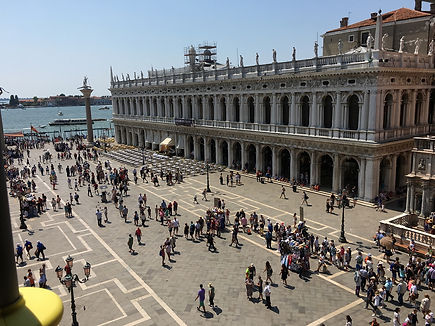
Making the Connections
I thought visiting a port city like Venice was a fitting end to the trip, let alone the fact that Venice and Miami share quite a few commonalities.
Both have been deemed international gateways, for one. The notion that the Venetian Republic was secular helped greatly in this respect. I feel that this could be because countries with different religions interacted with Venice and any personal beliefs were in a sense, put aside, for the intents and purposes of globalized trade.
For me, I understand that for a city to be successful, it must have as open of access as possible. In other words, rivers and ports are essentially vital for a city to succeed. Venice embodies that aspect perfectly with waterways as the main streets. This idea remains today, but for larger cities like Miami, New York, Hong Kong, etc. Venice is more casual with the use of water nowadays, as the ports seem to be more to the west of the city, where the ships and airplanes arrive inland.
The San Polo district boasts an interesting fish market. I saw two of Venice’s specialties here – the seafood, and the winged lion. The latter, because the people there are adamant about preserving the identity and local traditions, as opposed to touristic sprawl. One of my discomforts with visiting Italy was seeing some heavy emphasis on tourism all around, and could totally relate with those who are trying to minimize the impact. It was a pleasure to see the market active, a scene difficult to replicate at home thanks to the casualties of the likes of Amazon Prime.
I got to see and enjoy more local traditions – the watching of the UEFA Champions League match between an Italian team (Juventus) and Real Madrid, and I caught some of the regatta. The regatta, seen under the Rialto, jived well with the maintaining of tradition. This is not something done for the tourists – this is something pure to Venice. The physical activity involved is taken away as inspiration to embark in similar things at home in the future.
Visiting what is essentially the glass capital, Murano, presented its own charm. Indeed the stores that sell finished glass works resembled Miami's own Design District, but this time the works are entirely local. Visiting a glassblower may feel like visiting a local artist's studio, but the experience was unique. Whereas in Florence we interact with the artist postmortem, here we interact with the artist live.
Venice is world-famous for the Piazza San Marco, which feels like a welcoming gateway. Since it sits adjacent to the Grand Canal, it gave me the impression of a grand inlet to the city. The plaza gets lively at night, especially with the ongoing performance of classical music. The interesting part is that one does not have to be a paying customer to enjoy the music! Below: Quick sample of musical performance. Right photo credit Emmanuel Vega Arreola






